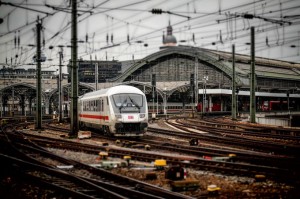Managing safety on the rail network presents a major challenge to the rail industry as it faces pressures from rising numbers of passengers and high-speed trains. Nowadays, trains can travel faster, are heavier, and require a greater distance to stop. Possibilities for accidents include derailment, head-on collision with other trains traveling the opposite direction, and collision with automobiles at a level crossing. Level crossing collisions are relatively common in the United States, resulting in death for about 500 people each year. (Source: Federal Railroad Administration)
With the rail industry’s constant focus on safety, special attention in that regard is directed at rail testing. In order to improve safety in railway traffic, various innovative approaches to testing rail systems have been proposed and put into actual practice. Conventionally, all existing approaches can be divided into two groups:
- Testing using real components.
- Testing using computer simulators designed to provide a realistic imitation of real components.
The latter approach is being increasingly used in the rail industry because it provides considerable amount of comparative advantages as opposed to live testing methods:
- Cost. Testing of real railway is extremely expensive; computer simulation is used to cut costs dramatically.
- Time. In the real world evaluating the performance of railway can take months, but simulation allows doing this earlier, during system development, and faster, resulting in time to deploy being reduced.
- Size. As mentioned above, the enormous size of railway presents challenge to test engineers, but rail simulator is a small-size system.
- Accessibility. Simulation is used when the real railway system or its components cannot be used; because it may not be possible to shut down an existing system for testing or it is being designed but has not yet be built.
- Control. With computer simulation, engineers can test railways on thousands of different conditions and combinations. In each case, the model simulates real life situations and allows conducting a wide range of experiments with no impact on real components.
- Accuracy. Rail simulation provides the ability to find out any problems in the behavior of a system efficiently, reducing the number of errors being detected at later stages of development or deployment.
- Safety. Simulation allows testing without affecting operational safety, while testing an operational railway may be hazardous.
- Regression. Repetition of testing to ensure that changes within system have not adversely affected system behavior.
Nowadays, simulation testing methods are widely used in the rail industry for testing from interlocking to dispatching systems. PSA has an impressive range of skills and detailed knowledge to effectively apply simulation solutions to control, improve effectiveness and safety on the railway.
We hope you found this article useful, and invite you to download our free white-paper “Taking Control over Railroad and Enhancing Rail Safety with Simulation Solutions” to get more information on railway simulation solutions.


Perfectly written!
I will right away grasp your rss as I can not find your
e-mail subscription hyperlink or e-newsletter service.
Do you’ve any? Kindly let me recognize in order that I may subscribe.
Hello Ronald! Thank you for your comment. You may subscribe to our blog in the upper right corner of the screen.